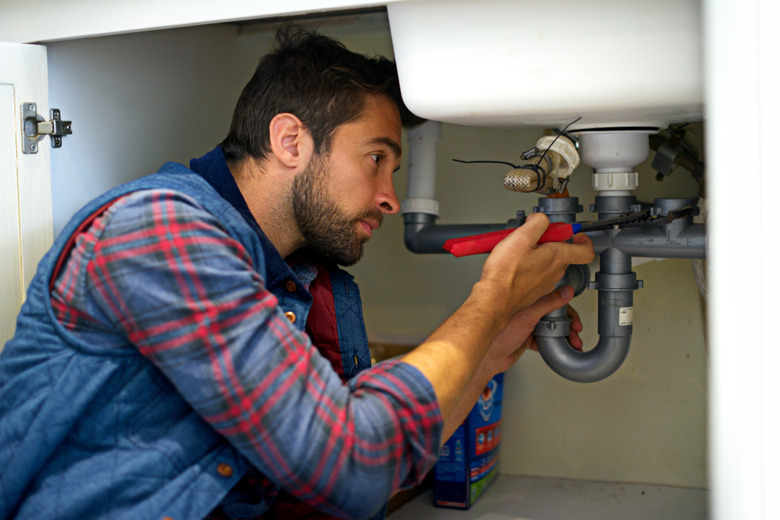How To Release Plastic Compression Fittings
We may receive a commission on purchases made from links.
Plumbers use compression fittings extensively in residential plumbing for both metal and plastic pipes. Most angle stops for sink faucets and toilets are secured by metal compression fittings, while P-traps are held together by plastic compression fittings. In addition, when repairing PVC and CPVC pipes, plumbers often install compression couplings to avoid having to do any gluing.
One of the advantages of compression fittings is that they are easier to disassemble than other types of fittings that plumbers use. Removing a compression fitting may take a little effort, especially if it's old and stuck, but it's a straightforward process that is best done with a pair of tongue-and-groove pliers. You need something that can grip a smooth pipe, so a wrench won't do.
How Compression Fittings Work
How Compression Fittings Work
A compression fitting has three main parts: a pipe with male threads into which the water line fits, a ferrule that fits in the gap between the pipe and the fitting, and a compression nut that wedges the ferrule into the gap to make the connection watertight when you tighten the nut onto the fitting. The nut compresses the ferrule into the gap, which is why it's called a compression fitting.
When you're installing a compression fitting, it's important to align the pipe with the fitting. If the pipe enters at an angle, the gap between it and the male threaded fitting won't be uniform; the gap will be uneven, and the ferrule will make a bad seal. Misalignment is the most common reason for compression fitting failure and leaking.
Removing a Compression Fitting
Removing a Compression Fitting
You use the same procedure to release a plastic compression fitting that you use for a metal one, and the job is usually easier for plastic fittings. To do it, you need two pairs of locking pliers: one to turn the compression nut and one to hold the pipe and prevent it from turning along with the nut.
Tighten one pair of pliers onto the compression nut and the other pair onto the pipe entering the fitting. Turn the nut counterclockwise while you hold the pipe steady. It may take a little more effort than you expect to unlock the nut and get it to turn, but it's never as much effort as it takes to unlock a metal fitting. Once the nut turns, you can often unscrew it by hand to separate the fitting, and all that's left to do is remove the ferrule from the pipe.
How to Remove the Ferrule
How to Remove the Ferrule
The ferrule is also known as a compression ring. A metal one often gets welded to the pipe and is difficult to remove, so you need a compression ring puller. The best compression ring puller for a plastic compression fitting, though, is your own fingers because plastic or rubber compression rings don't get welded.
After separating the fitting, simply grip the compression ring with your fingers and pull it toward the end of the pipe. If the ring is stubborn and won't move, try turning it in one direction or the other while you pull. Once it starts to slide, use a combination of pulling and twisting motions to coax it off the end of the pipe.
